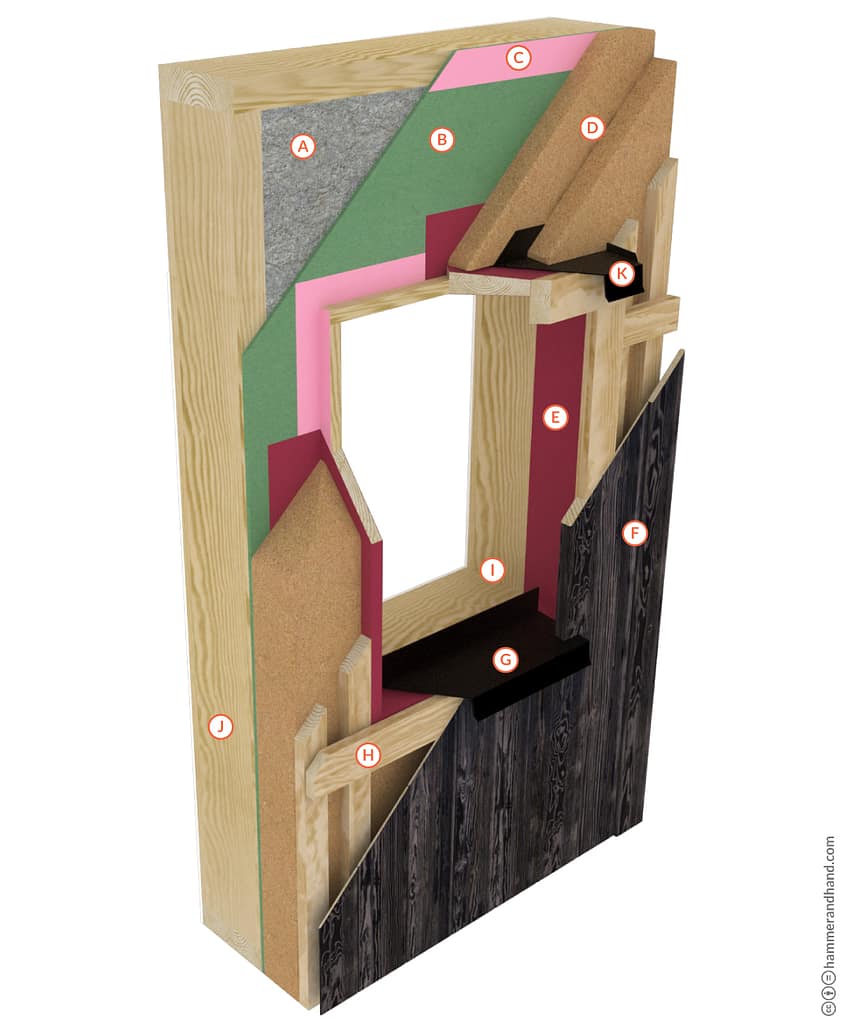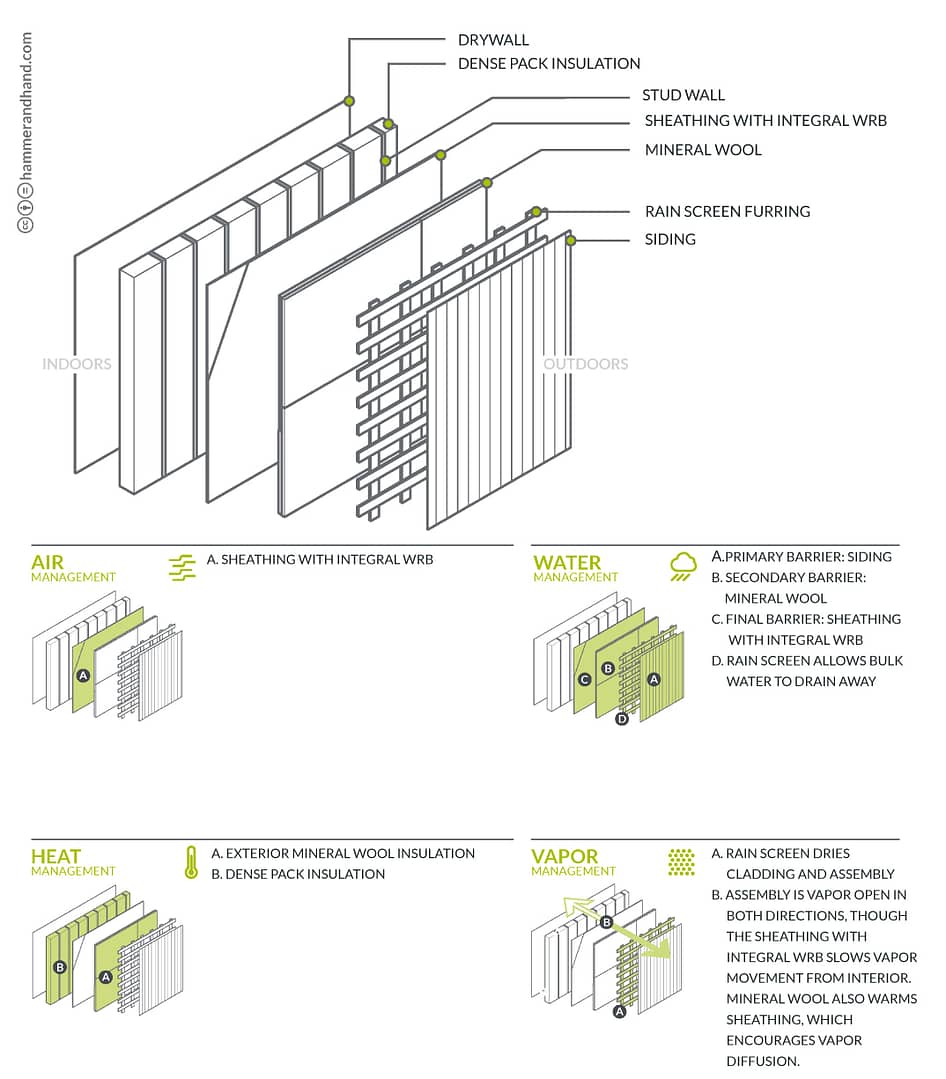
A. DENSE PACK INSULATION
B. SHEATHING WITH INTEGRAL WRB
C. JOINT & SEAM FILLER
D. MINERAL WOOL INSULATION
E. FLUID APPLIED SYSTEM AT PUNCHED OPENING
F. CEDAR SIDING (VERTICAL)
G. SILL PAN FLASHING
H. 2-WAY RAIN SCREEN FURRING
I. WINDOW BUCK
J. FRAMED STUD WALL
K. HEAD FLASHINGNote: Metal flashings not to return back to sheathing.
B. SHEATHING WITH INTEGRAL WRB
C. JOINT & SEAM FILLER
D. MINERAL WOOL INSULATION
E. FLUID APPLIED SYSTEM AT PUNCHED OPENING
F. CEDAR SIDING (VERTICAL)
G. SILL PAN FLASHING
H. 2-WAY RAIN SCREEN FURRING
I. WINDOW BUCK
J. FRAMED STUD WALL
K. HEAD FLASHINGNote: Metal flashings not to return back to sheathing.
This example combines an exterior layer of mineral wool insulation, ZIP Sheathing as air barrier and water-resistive barrier, fluid-applied flashing at rough openings, and dense pack insulation (cellulose or fiberglass) in an interior stud wall for a super insulated, vapor open, and resilient high performance wall assembly. The diagrams below show how the assembly manages air, heat, water, and vapor.


